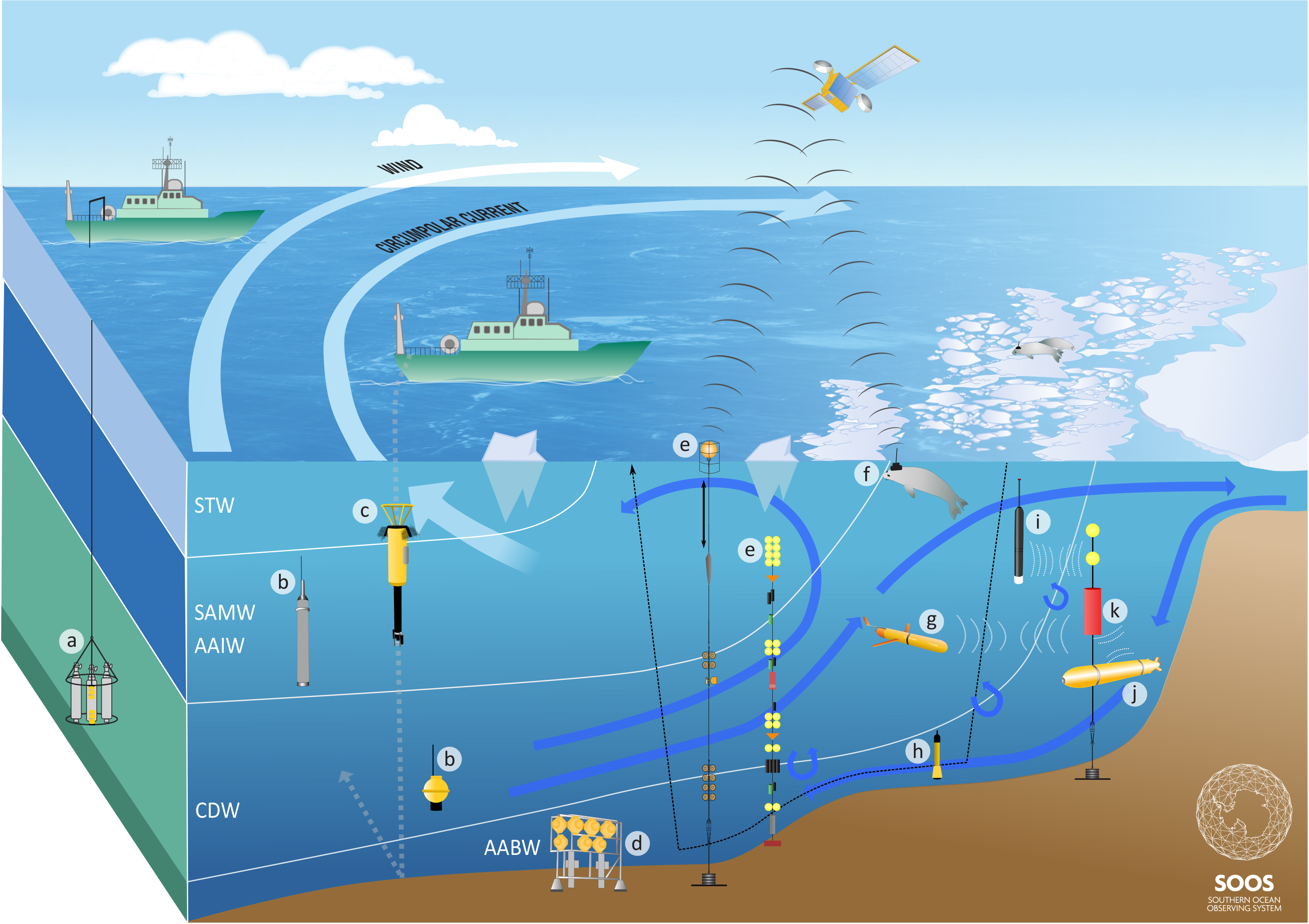
Science Theme 2: Circulation

Understanding and quantifying the state and variability of the Southern Ocean circulation
The Southern Ocean plays a key role in regulating the global climate by controlling heat, carbon dioxide and other greenhouse gas exchanges between the atmosphere and the ocean. Yet, despite decades of research to develop an understanding of the underlying processes, the net exchange rates and other processes remain critically under-observed. The central element that impedes our ability to project decadal-to-centennial scale variability and change of ocean heat and carbon uptake and storage is our lack of understanding of the rate at which oceanic water masses can exchange heat and carbon with the atmosphere.
The Argo array has significantly advanced observations of the upper 2000 m of the Southern Ocean, which has led to important progress in quantification of temperature and salinity changes and circulation dynamics, as well as in understanding and attributing those changes. However, many unknowns remain. New satellite sensors and autonomous surface, airborne and subsurface instruments promise synoptic time-series observations of important aspects of the freshwater balance, including snow and ice thickness, ice shelf basal melt, and ocean circulation, which will provide substantial new information to advance our understanding of the Southern Ocean environment and fill in existing data gaps. However, these observations, particularly satellite-based ones, require validation and calibration against in situ observations, which places emphasis on the availability of a data system that provides access to curated observations.
Key Science Challenges
2.1: Understand Southern Ocean heat, freshwater and carbon exchange and storage and effects on the global ocean. This includes:
-
Production and export of Antarctic Bottom Water
-
Upwelling of deep water
-
Formation and subduction of Subantarctic Mode Water and Antarctic Intermediate Water
2.2: Understand dynamical processes in the Southern Ocean and their likely changes in the future. This includes:
-
Interior water mass transformation due to iso/diapycnal mixing
-
Processes and forcing mediating upwelling/subduction from the mixed layer
-
Role of mesoscale and submesoscale eddies in setting water mass properties and mediating the overturning circulation
-
Stability of the upper ocean overturning circulation in response to changes in winds, increased ice melt and surface warming
-
Response of the ocean circulation to atmospheric variability (wind, air-sea heat momentum and freshwater fluxes)
-
Stability, variability and future trends in frontal positions
2.3: Understand how climate change will alter surface fluxes and freshwater input from the cryosphere, and the impact of these changes on water mass properties, formation and circulation, and implications for heat and carbon

Addressing Challenges
Delivery of the knowledge and scientific outputs that will address these challenges is carried out by SOOS alone, but by many community efforts, including the programs and projects of SCAR and SCOR, among others. SOOS will not duplicate the efforts of these programs, but will support them where appropriate, to enhance the collection and delivery of the required data. Click below for a list of key community efforts to address these challenges:







